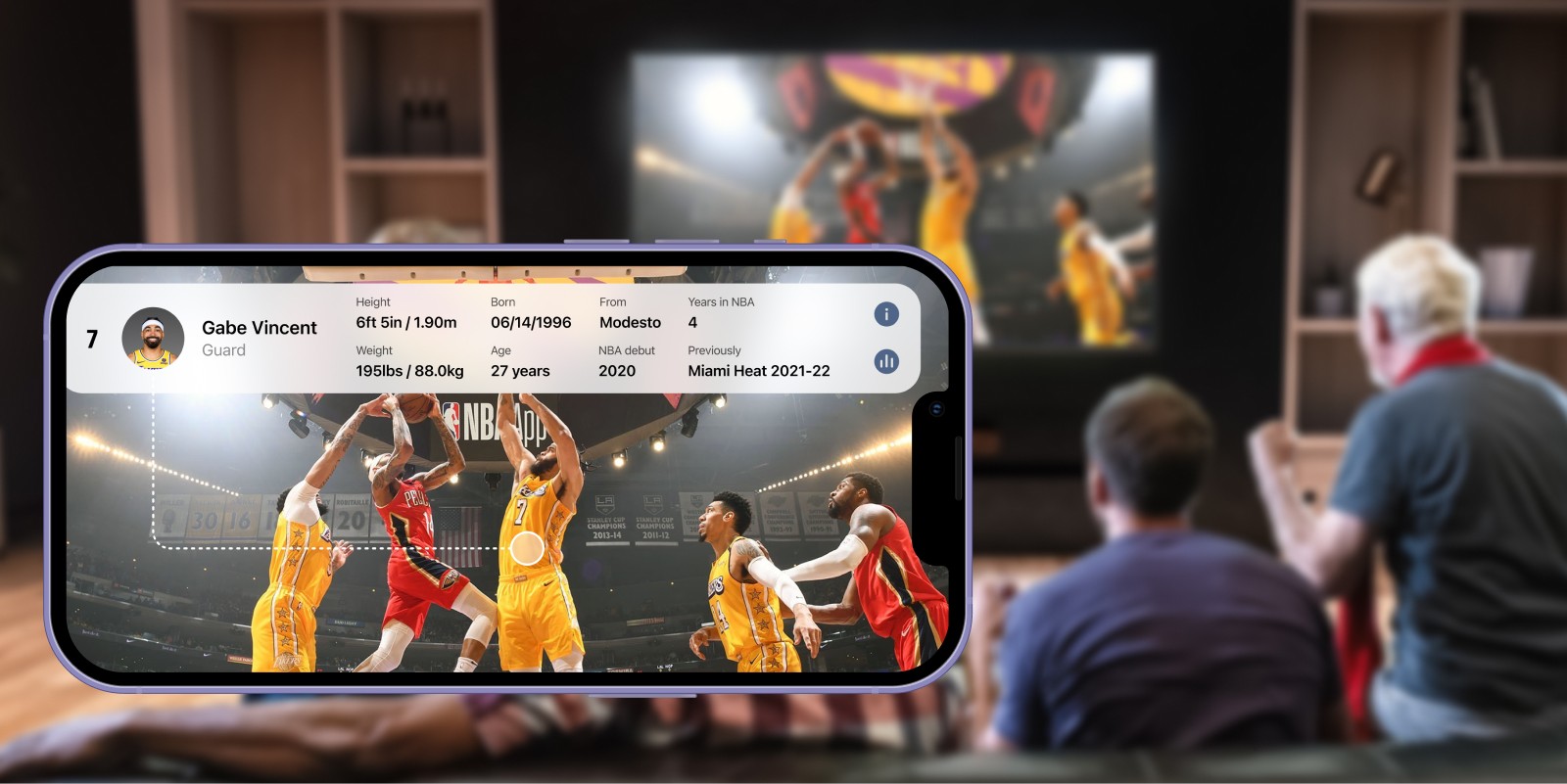3 video streaming trends empowered by events we attended
We keep on hopping from one streaming industry event to another to stay up-to-date with new trends and share them with you. This time, we’ve collected a range of insights our team brought from the events below:
- ANGA COM, May 23-25 (Germany, Cologne)
- Data-Driven Video Summit, June 7-8 (Online)
- London Tech Week 2023, June 12-16 (UK, London)
- IBC 2023, September 15-18 (Netherlands, Amsterdam)
Together with our colleagues, we considered the video streaming trends and challenges that were under discussion, and tried to predict what is awaiting online streaming platforms soon.
1. Personalization will define a viewer’s loyalty to the video streaming service

What’s in demand today?
“Personalization is not only about content, but also about the ability to discover it in the way a user would desire. A great custom user experience within streaming platforms feels intuitive for viewers. It shouldn’t take too much effort to leverage streaming services that are customized but do not seem user-friendly. Intuitiveness should be part of a user experience and interface.”
What technology will drive the trend? Spoiler: Artificial intelligence
AI will be the major innovation, boosting video user engagement by customizing watching paths through advanced recommendation algorithms. Speaking about streaming platforms, there is a use case that will be a priority for video streaming services: putting the recommendation system to a new level.
What do we have now? On-demand video platforms can bring content to viewers before they actually know what they are looking for. The existing OTT solutions blend easy content discovery into the UX based on viewing preferences and habits.
What is a viable use case in the near future? Building content recommendations is no longer enough if you aim to engage users and retain their attention. You should be able to integrate a personalized UX into an interface, for example:
- Suggest collaborative filters that recommend shows and movies based on similar interests related to other viewers.
- Give users a chance to choose personalization settings, like offering you content generated only with an eye on trends, watching lists, locations, or combining several criteria.
How we can help
Explore our expertise in front-end development for video streaming solutions and get to know how we can transform the UX/UI of your OTT platform.
2. Iterative data warehousing will be at the heart of a single source of truth for business operations


What’s in demand today?
“The main challenge for the media streaming industry is data sources. They have too many of them to extract data from, with different levels of data quality and data sets collected from multiple devices. For fast experimentation, they need a reliable single source of truth they can easily access, rely on, react to, using the insights grabbed from data.
Data privacy regulations are another challenge. The success of video streaming services depends on personalization, and the task is to follow the data protection laws but not kill this personalization because of strict legislation. A consumer needs to understand why data is collected. If it does not add value to video consumption services, he or she wouldn’t be willing to share their preferences or other info. The difficulty is all about ensuring transparency in data gathering. They need to realize that the data will be used to improve their viewing experience. Building awareness of why data needs to be collected would be a priority.”
What technology will drive the trend? And what strategic approach will win?
Further reading: Data warehouse implementation (Components, steps, and benefits)
Find the questions that may concern you about data warehousing answered by Oxagile’s data engineer. The insights are based on the specialist’s real project experience.
Data warehousing will become the lifeline for the video streaming industry. Establishing a centralized data lake enables a single source of truth, serving as the foundation for multiple operations like marketing, sales, and production. However, the evolving needs for data define the iterative approach to building them. Though big companies have departments with smaller data lakes, they strive to build a huge, unified semantic layer on top of that. Growing it iteratively allows them to be flexible in meeting current data needs.
Why may streaming services providers need data warehousing? First, it’s data about content consumption, like the number of people who viewed or accessed films or TV shows, etc. This gives the grounds for reporting to content creators who analyze the information to assess the effectiveness of distribution campaigns.
Speaking about OTT streaming platforms and VoD services, content aggregators worry about getting more valuable insights into the profitability of their services. How to drive more subscribers and retain the current users? Data warehouses will be the golden source of the answers to those questions. Additionally, a centralized data lake may significantly enhance collaboration between business departments, synchronizing the insights within an overall business strategy. All these scenarios will make OTT platform owners do more to educate people on why data sharing is a must for VoD services, building brand trust and acting within data privacy guidelines.
3. Automation will be the foundation for sustainable services of broadband companies

What’s in demand today?
“Struggling to meet sustainability standards, broadcast companies moved from copper to fiber, which consumes much less energy than copper by transmitting data using light. Fiber networks don’t need constant power to operate, compared to copper networks powered by electricity. All this provides better conditions for broadband providers to go green. Efficient fiber deployment at all stages is a new trend for sustainable broadband services.”
What technology will drive the trend? A hint: there’s been much hype about it
The major obstacle to fast optical fiber deployment is the planning stage of the entire rollout process. The phase includes the creation of the fiber deployment layout based on static data about the infrastructure. Due to regular infrastructure changes, the execution of the plan is frequently altered, causing rollout delays. Thus, planning is a significant challenge for broadband companies, and automation and real-time infrastructure data can be turning points for optimized planning.
Fiber automation seems to be the best means of streamlining the process of fiber deployment. How can it be achieved? For example, advanced computing technologies like LiDAR (Light Detection and Ranging), artificial intelligence, and ML-based algorithms speed up fiber rollout planning and boost its accuracy and efficiency. Tools enabled by the above-mentioned innovations automatically generate layouts by capturing geolocations and filtering possible fiber layout factors, including ducts, trenches, underground, etc. These advanced automated techniques will help reduce the fiber deployment planning time as well as the environmental impact of extra rollout processes caused by project delays.
4. Engaging sports fans will be one of the major streaming trends in the domain

What’s in demand today?
“Sports fans now expect more than just passive viewership during the live streaming of sports events. They want to actively participate, connect with fellow fans, and have a sense of belonging. The demand for personalized, interactive, and social experiences has skyrocketed. Fans want to feel the excitement, emotions, and camaraderie that come with being part of the game.”
What will drive the trend? Not a particular technology, you know
In this digital era, sports organizations will prioritize UX tricks to captivate and retain fans’ attention. By simplifying navigation, enabling real-time interactivity, and personalizing live and on-demand streaming experiences, sports organizations can create immersive environments that cater to the demands of sports fellows. By refining the user experience on their streaming services and the platform interfaces, sports organizations can forge deeper connections with their fan base.
For instance, fans are happy to actively participate during live streaming events and share their emotions with fellow enthusiasts. Offering real-time interactive features, such as live polls, social media integrations, and chat functionalities, allows fans to engage with each other, express opinions, and feel connected to the larger community.
Highlights published after live broadcasts will support the engagement scenario. The integration of AI into post-viewing highlights has transformed the way sports fans interact with the game. By harnessing AI algorithms and facial recognition technology, sports organizations can curate hyper-specialized moments, offering fans a personalized experience like never before. Gone are the days of generic compilations; now, fans can watch curated highlights tailored to their specific interests. Whether it’s showcasing a particular team’s defensive prowess or capturing the brilliance of an individual player, AI-powered highlights deliver a personalized and immersive viewing experience.
Final thoughts
It’s time to think about how video market stakeholders can respond to the evolving streaming trends. If you are interested in integrating these innovations into your business, contact Oxagile to find out how we can help you.



























